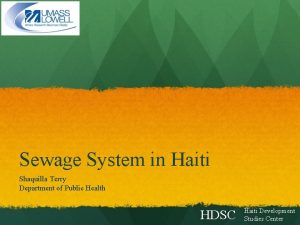industrial effluent solar radiation watershed land cover alteration

- Slides: 1

industrial effluent solar radiation watershed land cover alteration riparian land cover alteration upstream impoundment ↓ vegetation LEGEND human activity source ↓ canopy cover ↓ infiltration additional step in causal pathway ↑ channel width channel alteration surface water withdrawal ↑ bank erosion ↓ permeability surface water release downstream impoundment groundwater withdrawal ↓ floodplain connectivity ↓ water velocity ↓ channel complexity deep water release interacting stressor ↑ surface runoff proximate stressor ↑ water surface area ↑ solar heating (land) ↓ groundwater recharge ↑ water retention time mode of action ↑ heated surface runoff biotic response ↑ evaporation ↑ warmwater inputs ↓ water volume ↑ solar heating (water, streambed) ↓ hyporheic exchange ↓ thermal buffering capacity ↓ coldwater inputs ↑ suspended sediment ↓ baseflow ↓ dissolved oxygen ↓ water temperature ↓ average temperature ↓ minimum temperature ↑ chronic thermal stress ↑ water temperature ↑ rate of water temperature change ↑ acute thermal stress (lower limit) ↑ maximum temperature ↑ acute thermal stress (rate of change) ↑ acute thermal stress (upper limit) ↑ ionic strength ↑ average temperature ↑ rate of total heat accumulation ↑ chronic thermal stress ↑ growth rate ↑ metabolic rate ↓ rate of total heat accumulation ↑ mortality ↓ reproductive success Δ behavior ↑ minimum temperature Δ timing of thermal cues ↓ condition ↓ occurrence of coldwater cues ↑ energy requirements Δ timing of thermal cues ↑ voltinism ↑ activity Δ predator-prey dynamics ↓ warmwater taxa ↑ parasitism & disease ↑ warmwater taxa ↑ coldwater taxa ↓ coldwater taxa Δ predator-prey dynamics ↑ predation risk biologically impaired invertebrate assemblages Detailed conceptual model diagram for TEMPERATURE biologically impaired fish assemblages other biological impairments Developed 7/2007 by Kate Schofield & Keith Sappington; modified 7/2010

